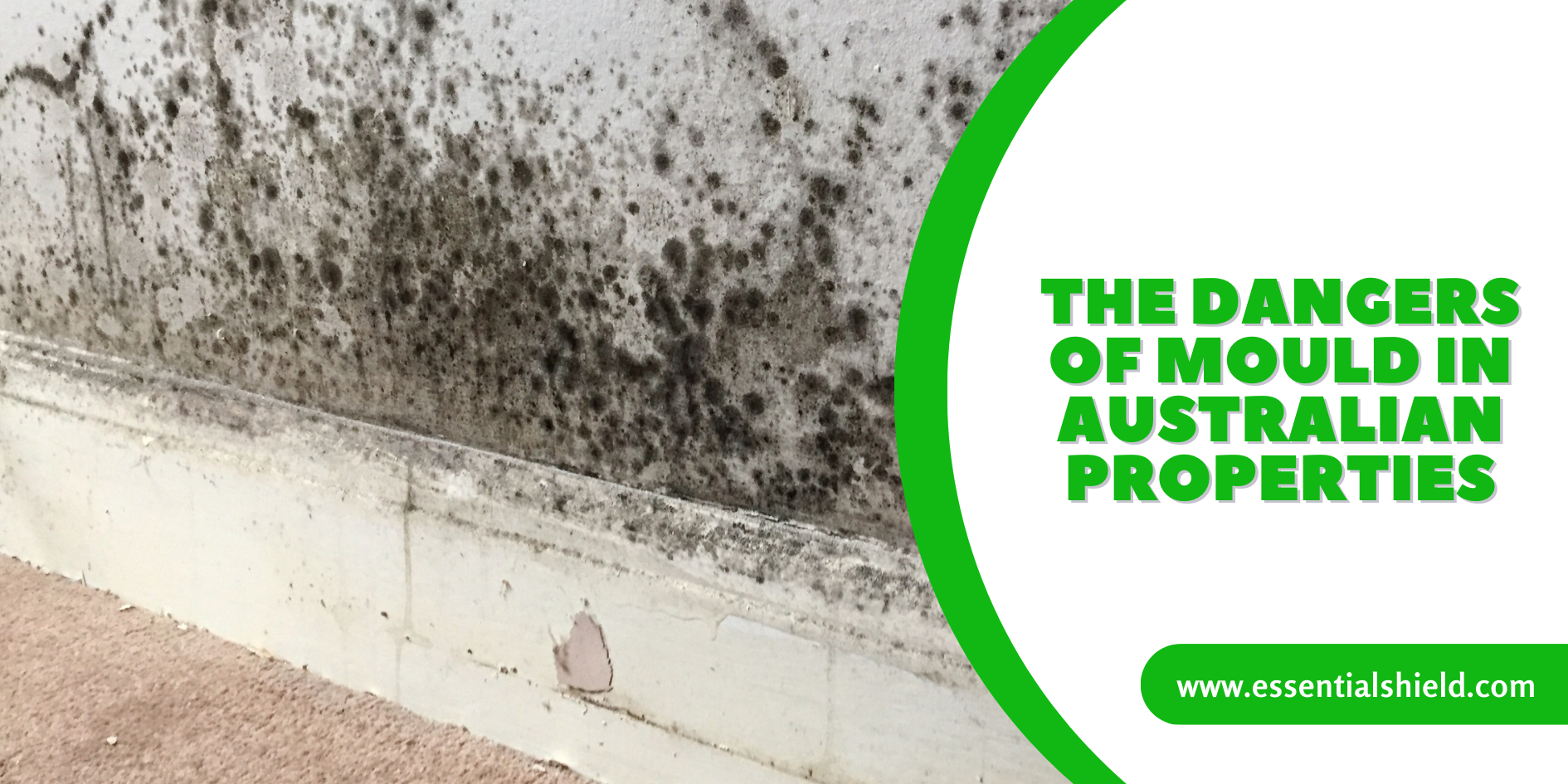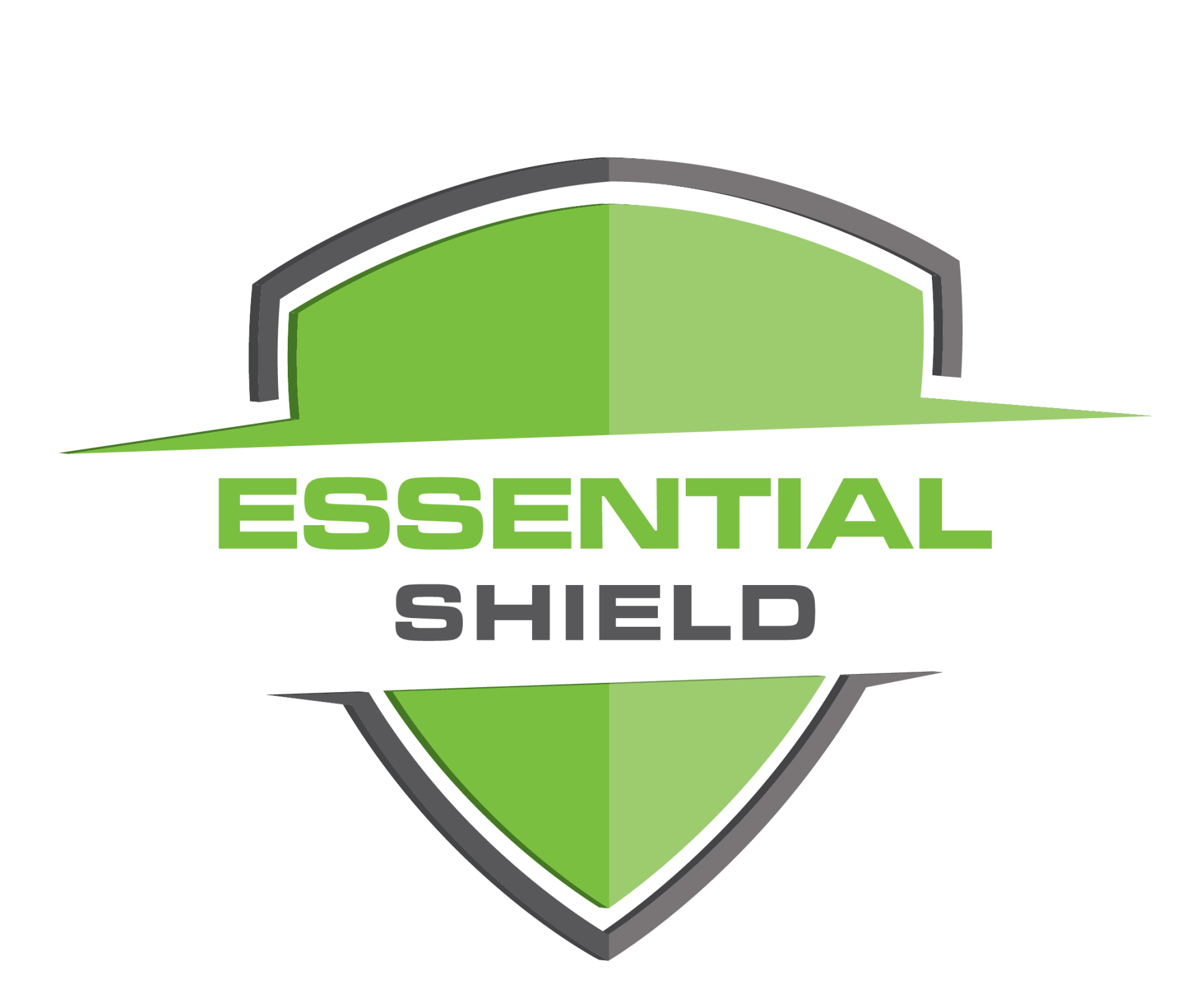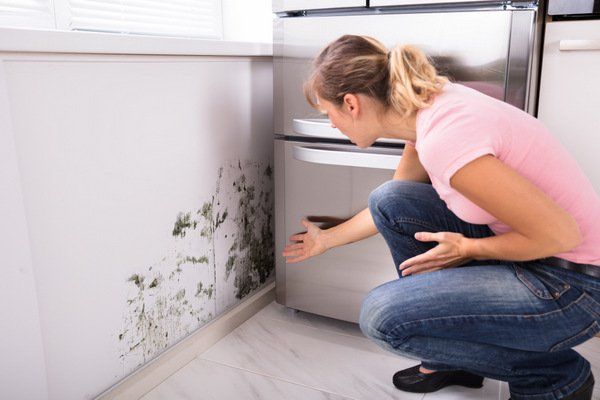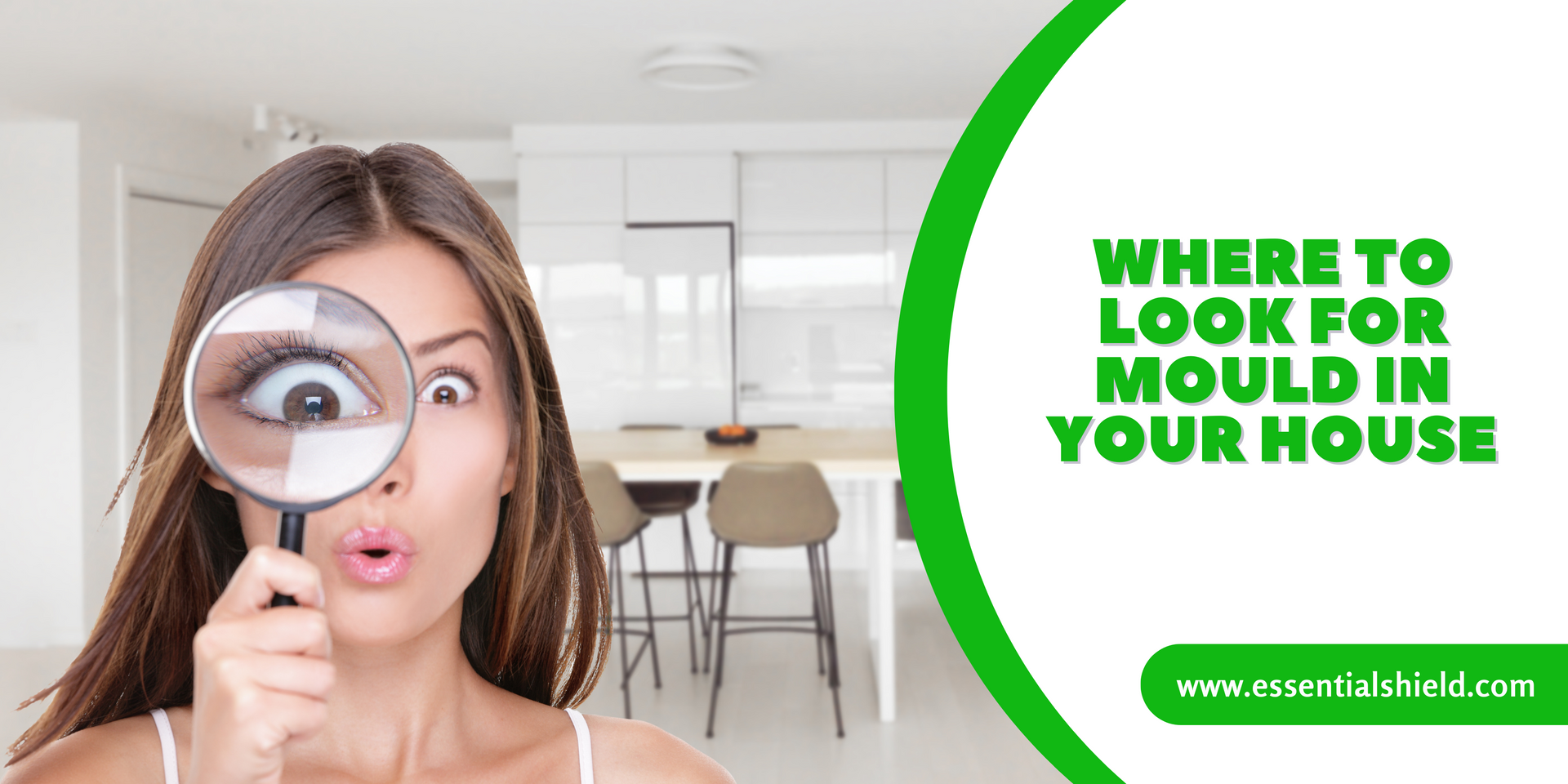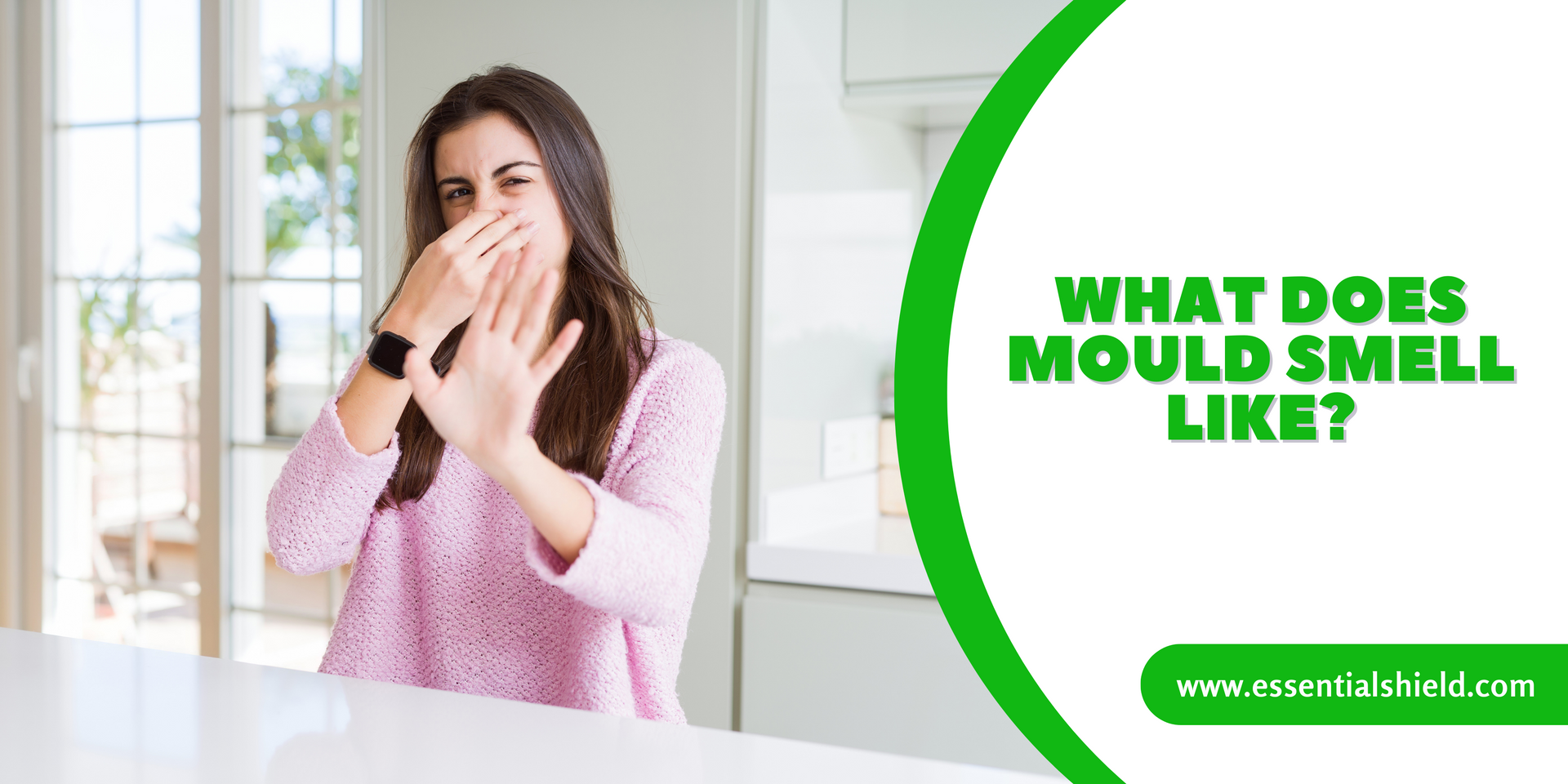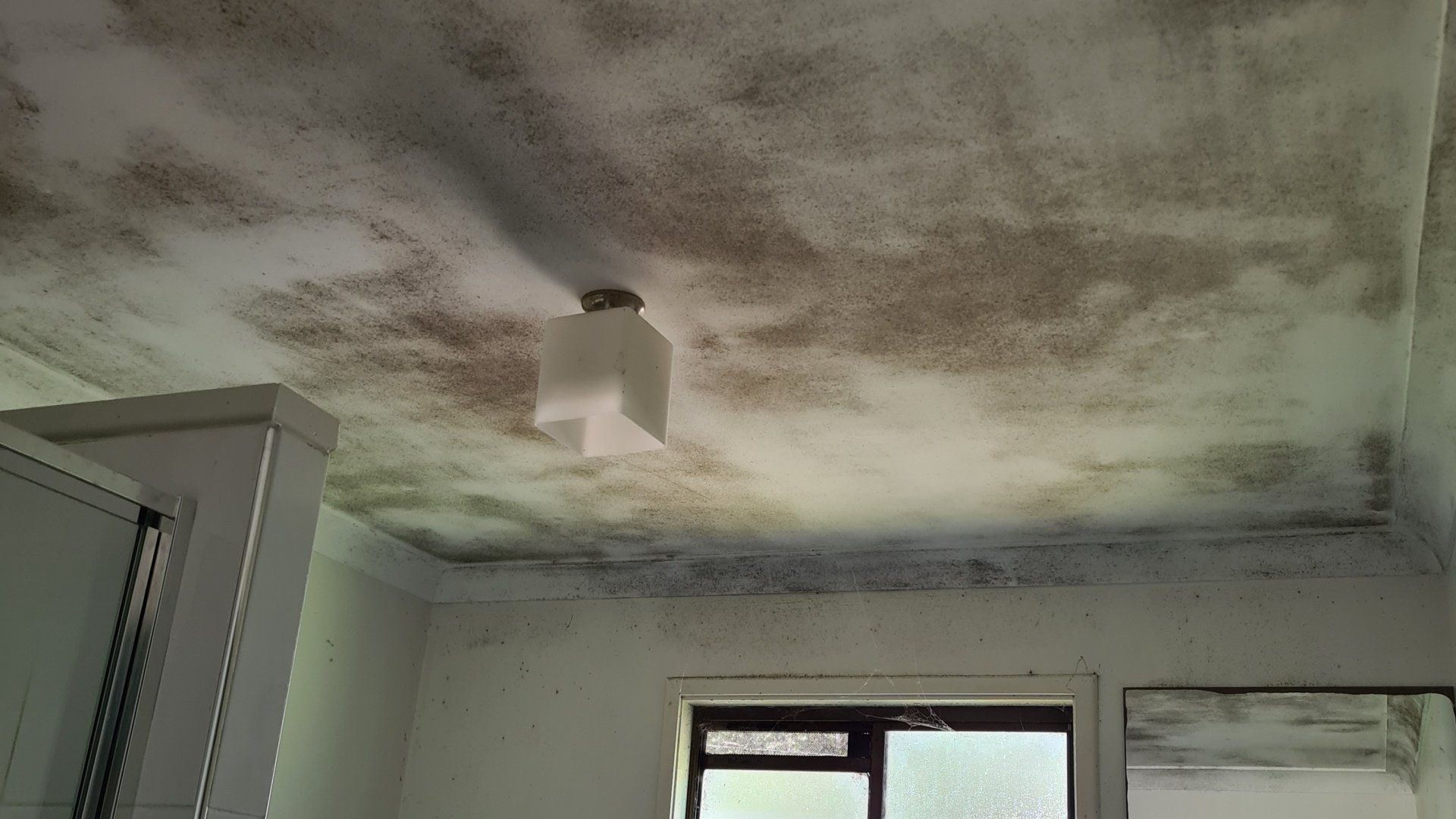How to remove mould and mildew naturally that smells amazing.
Essential Shield offer the following D.I.Y mould removal and prevention information below!
Our objective here is to provide you with some straight forward and, as importantly, affordable set of steps that will assist you in removing Mould & Mildew and then retard it's return.
How to remove mould and mildew naturally that smells amazing.
Mould and its risks to health and well being:
There is an increasing awareness that having mould in the home is not only unpleasant, but actually poses a potentially serious impact on our health.
Authorities have now rated mould in living and work environments at the same hazardous level as Asbestos – HAZARD 1!
If you, or any member of your family, suffers from asthma, sinus infections, constant feelings of fatigue, on going cold or flu symptoms, memory loss, irritation in the eyes or air ways then it may be time to have a close look at the actual health of your home or may be in the work place! The presence of
mould could well be a key contributor to such unwanted health issues!
Whilst there is a good amount of information out there on the health dangers of mould and how best to deal with it in living in your environments, the key is to deal with it and then keep it at bay without the added health threat of exposing yourself and family further to dangerous and highly toxic chemicals and pesticides in the process.
In some cases the option of employing a professional
Mould Remediation company may be simply beyond the budget, then it has to come down to a
Do It Yourself situation!
A little bit of effort and the use of the right products can establish and maintain healthy and pleasant living environments and at times a profound impact on reclaiming health and well-being for residents!
How do I know it is mould?
Mould lives in dark and moist environments. Do a complete check of your home/workplace to identify locations where mould is present. This can be done visually and by using your reliable sense of smell.
Personal Protection! In the cases where high levels of mould are present always wear gloves, a protective breathing mask and eye protection.
Always wash your hands and protective equipment thoroughly after inspecting for
mould or undertaking mould removal activities. Remember,
mould does not have to be visible to impact your health. If you can smell it (that musty smell) then you are breathing it in!
Finding the causes of mould.
In most cases
mould ingress is caused by either water or moisture ingress into the premises, or poorly ventilated rooms/zones. The objective here is to identify what is actually causing the
mould ingress and then rectify it.
Personal Protection.
From here on in you should take several personal health protection measures. Whilst you have been living with the
mould up until now, the game changes some what when you start disturbing / removing the
mould spores, so it is a really good idea to protect your self by wearing gloves, breathing mask, and protective eye goggles when you are actually doing the
mould removal works.
As mentioned before, always wash your hands really well when you have finished
mould removal works, change and wash clothes that you wore during the work period!
Step by step advice on how to remove mould naturally.
Here we attempt to provide you with information that will assist you in dealing with most of the surfaces you may need to address within your mould removal activities. We strongly suggest that you use new microfiber mops and or cloths. These are brilliant in that they take off the
mould and grime and do not release it back onto the surface.
Are you ready to use Mr Mould?
Removing mould at the best of times is not a pleasant task, but adding the additional threats associated with the use and exposure to toxic chemicals can significantly increase the threat to maintaining our health and well being.
Mr Mould is water-based, it contains the five essential oils that are in the oil blend (Cinnamon, Rosemary, Eucalyptus, Lemon and Clove) and a naturally based Coconut surfactant that does the cleaning.
This remarkable product not only remediates (Kills) the mould and mildew and cleans it from the surface, it also leaves behind a micro-fine – non-visible treatment on the surfaces that retards the return of mould and mildew. Mr Mould works!
If you are planning on repainting after you have removed the mould, the residual Mr Mould product does not affect the repainting such surfaces. Always allow the product to completely dry before commencing painting.
Important Note:
As with any cleaning product, Mr Mould will make floor surfaces very slippery. Take great care of footing while cleaning.
Removing mould from internally located hard surfaces.
Ceilings and walls.
DO NOT spray the Mr Mould directly onto walls or ceilings, actually apply it to the cleaning cloth or mop and then commence cleaning the targeted surfaces. With heavy soiling of the surface it is a good idea to apply the Mr Mould evenly over the surface and then leave it for several minutes to do its work before removing it, can save you a great deal of muscle power!
Usually, two passes with the cloth or mop over the surface are enough to remove the mould and clean the surface. Change/rinse cloths regularly in water as they soil up. In the case where you have a biosystem, it is a great idea to rinse cleaning cloths and mops in a bucket and then empty it outside onto the lawn or garden.
Doors and window frames.
Using microfiber cloths, apply Mr Mould onto the cloth and then clean surfaces, again do not spray surfaces directly.
Glass and Windows.
Glass can also have mould growing on it and where it is present it is important to remove it. To remove mould from glass, take the Mr Mould product and dilute it at a ratio of one part product and 9 parts water. Using a microfiber cloth clean glass down and then finish / polish with a “dry” microfiber cloth.
Finished timber surfaces.
Mr Mould is ideal for removing mould from timber, however, due to the wide variant of timber finishes on the market, it is very important to do a trial patch on an inconspicuous surface to ensure that there is not going to be an adverse reaction between the product.
Use the same method of cleaning as detailed for the doors, and window frames.
Cleaning / treating soft furnishing / curtains and carpets for mould.
The objective here is to remediate the mould and then, as appropriate, clean the fabrics/textiles/floor coverings in a normal manner. Thoroughly vacuum (Ideally using a HEPA filtered vacuum) all targeted surfaces.
The ideal service for this is the Essential Shield Mould Fogging. Enquire about our Mould Remediation Fogging Services.
Shake well and using a fine mist trigger spray bottle, apply a fine/light mist spray overall targeted fabric/textile surfaces. Allow to dry and stand for a minimum of 12 hours. Thereafter, as and where the surfaces need to also be cleaned undertake cleaning in the manner that suits the fabrics/textiles.
Special Work Note: Avoid application/overspray on all hard floor surfaces like tiles and timber flooring, it will make them slippery. Cover hard surfaces like furniture before application of the spray.
Important Notes: Always do a small trial application of the product on all targeted textiles/fabrics floor coverings to ensure no adverse effects from the product are experienced.
Mould inside roof voids.
This is a bit of a tough one, but can be important! In cases where water has found its way into the home through cracks/gaps in the roof, mould has likely been established.
Whilst the ideal way to deal with such locations is to mechanically fine mist fog a naturally based essential oils treatment into all areas of the roof void, we do not recommend that people venture up into their roof voids to undertake such works. This is one area where we very strongly suggest that you call us for professional advice.
Ideally, such a tradesperson should be able to deal with both the repairing/waterproofing of the cracks/gaps in the roof and repair guttering as may be needed and then undertaking the fogging of the roof void.
Mould in clothing and linen.
In many cases where mould and mildew have found their way into wardrobes and cupboards/draws, clothing may be infested as well.
In general, terms mould and mildew in clothing and fabrics can be dealt with by adding about a quarter of a cup of Mr Mould into your washing machine. This will kill and remove the mould spores and deodorise the articles!
Please check all articles carefully to ensure that such washing/cleaning measures are suitable and will not damage the fabrics!
On-going mould prevention measures.
There are also several simple steps that you should take to assist in retarding the return of mould in the home.
Ventilate the home regularly on fine days, opening all possible windows and external doors. Where practicable, keep all curtains open allowing sunlight in during the day. Where you have dense vegetation close to the premises it is a great idea to either remove or prune down such plants and trees.
During high humidity periods of the year, if you have an air conditioner with a dry – dehumidify mode, run the air conditioner on this setting as much as possible. An ideal time to do this is when you are at work. Ensure you close all windows and doors when doing this.
You can also elect to place some of the Premium Essential Oils on some tissues and place them on a small plate and place them on the air intake of your air conditioner. This will provide added protection against airborne mould. It is a really good idea to establish and maintain humidity/moisture absorbers throughout the home in known mould risk locations such as wardrobes and bathrooms. These need to be checked regularly and recharged/changed over as needed.
Diffuse the Premium Essential Oils in your oil burners at least once a week in each room during high mould risk periods of the year.
Dust control also plays a really important role in controlling mould in the home. As the dust settles on surfaces it absorbs moisture creating the ideal environment for mould to set up home. One location that you will find this is on Venetian blinds.
The key is "House Keeping!"
